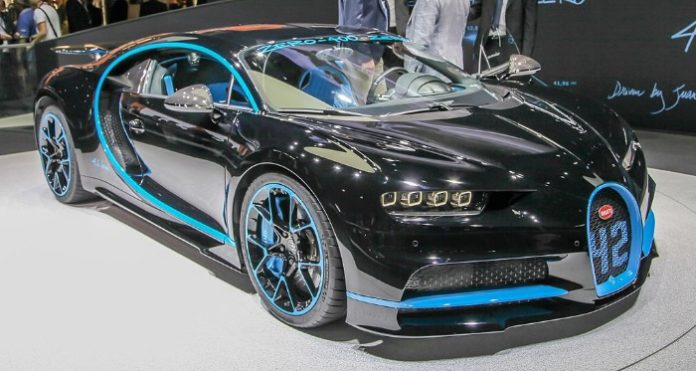Volkswagen just released a new video showing the Bugatti engineering team performing braking tests on their new 3D printed titanium calipers.
In the video, you’ll see the rotors accelerating upwards of 230 mph and then rapidly decelerating down to 30 mph, while heating up to more than 1900 degrees Fahrenheit. It’s a violent display showing what real supercars are made of, albeit it’s difficult to imagine this happening to a vehicle in motion.
Earlier in the year, Bugatti announced they have developed a new technology to 3D print brake calipers out of titanium powder.
3D printing allows you to create complex shapes with require fewer finishing operations and less material waste. However, until recently, the technology was unable to produce truly rigid structures which are as strong as cast or billet machined alternatives.
Making fast cars requires strong and reliable brakes. The Chiron already uses the most powerful brakes of any production vehicle. When you’re speeding at 260 mph, brake failure means you die.
For Bugatti to showcase their 3D printing technology with the calipers and not any other less critical part is a testament of their confidence in their craft.

3D printing is great for manufacturing complex shapes
In order to really appreciate the work, we need to take a deep dive into the process.
Bugatti’s new calipers have incredibly complicated geometry. The shape is optimized via computer algorithms to achieve the necessary strength with the minimum amount of material, therefore saving weight.
The final wall thickness at any given point varies between 1 mm and 4 mm, resulting in calipers weighting just 6.4 lbs. The current forged aluminum brake calipers equipped on the Chiron weight short of 11 lbs. There’s a massive 40% reduction in weight.
Such precise forms are easily achieved with 3D printing while wasting very little of the precious titanium.
In comparison, milling the same shape out of a solid block would probably discard 80% of the volume as chips, which then need to be recycled. Producing titanium alloys is neither the cheapest nor easiest of metallurgic tasks, so the entire process becomes massively wasteful and expensive.
How does 3D printing titanium work
It begins with powdered titanium alloy – Ti₆Al₄V.
The powdered metal is laid layer by layer for a total of 2213 layers to complete one caliper. In between each layer, four 400 watt lasers torch the titanium, melting it and fusing into a solid continuous piece of metal. The process takes 45 hours.
After the caliper is printed, the remaining material is removed and recycled in the next print. The caliper is removed from the printer, but all the cavities are still full of support material, which is there to hold the shape until the part gains its final strength.
Next, the caliper undergoes heat treatment. It goes into a furnace at 1292 degrees Fahrenheit. The high temperature allows the atoms in the titanium to reorganize into a more ordered, even structure. The temperature is slowly lowered to 212 degrees, which allows the metal to cool and expel all internal stresses.
Now, the supporting material can be removed and the caliper undergoes a smoothing process, which is a combination of mechanical grinding and chemical treatment. The smooth shape allows loads to distribute gradually and evenly across the entire part, increasing it’s longevity and fatigue strength.
The last step is to put the part into a 5-axis precision milling machine where all the functional surfaces, like the piston cylinders, are machined to fit the final specification. The milling takes 11 more hours.
After a 3 day manufacturing process, the brake is caliper ready to go into the test bed you see in the video.
By now, you should begin to realize the extraordinary amount of research and development required to make the ultimate car. It’s advancements like these that propel the world further. Or stop it in its place.